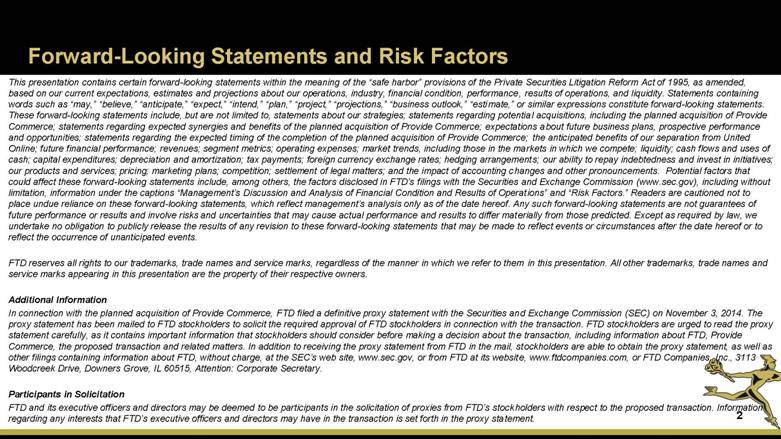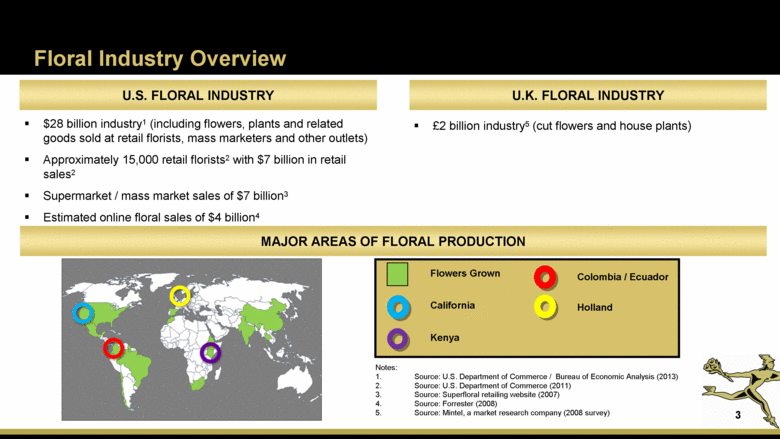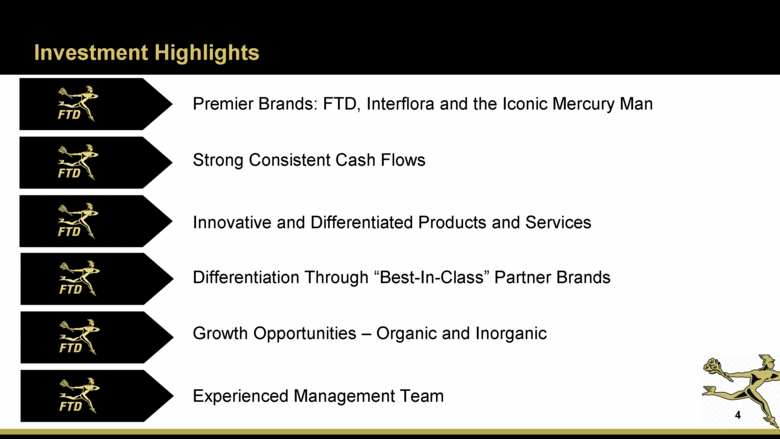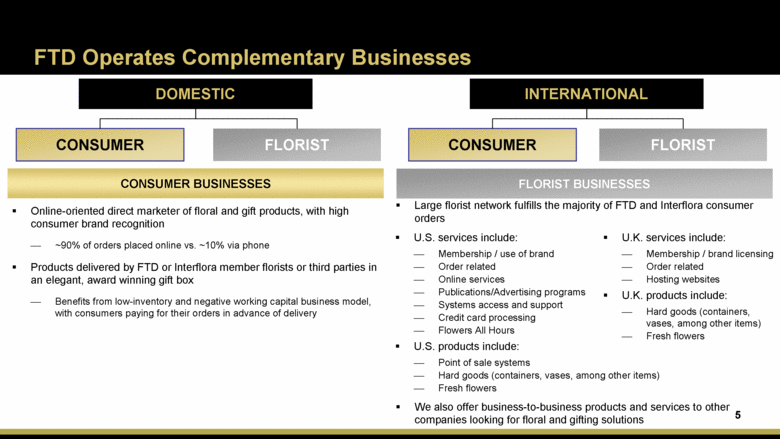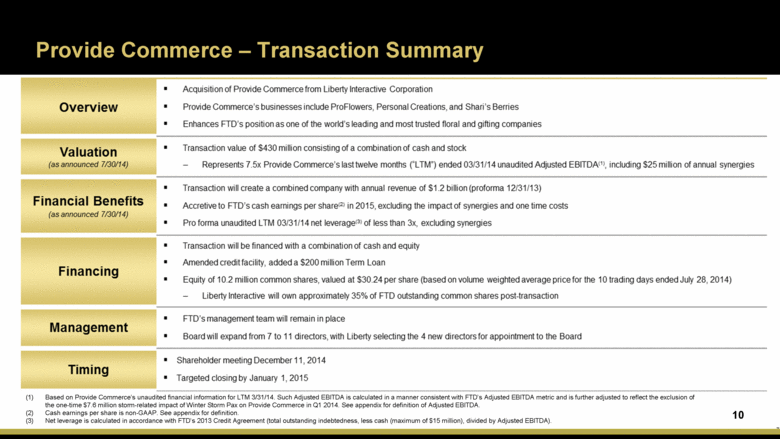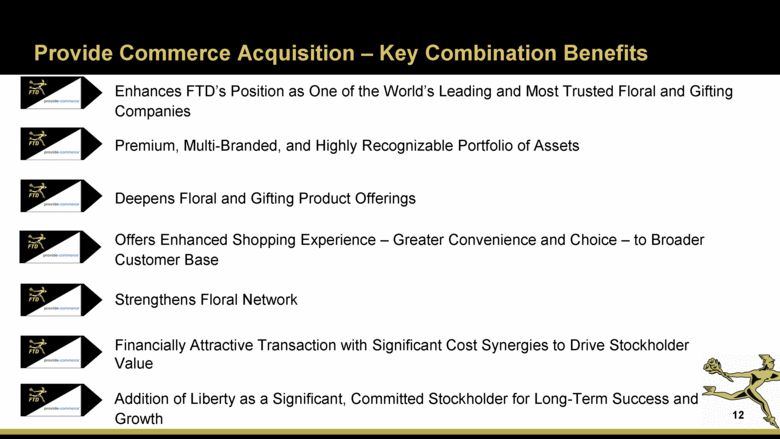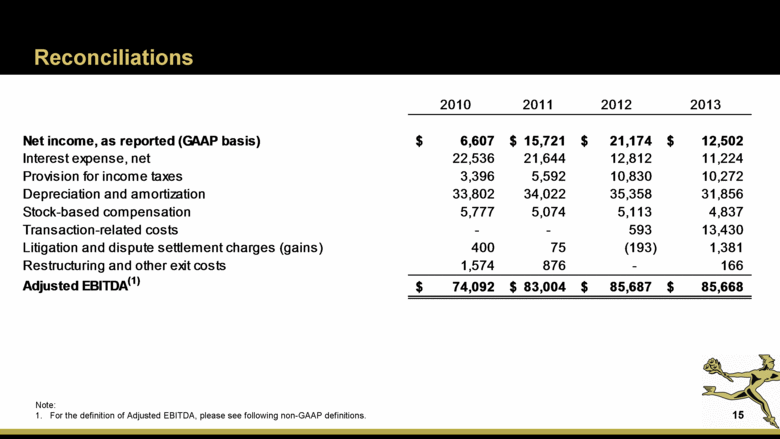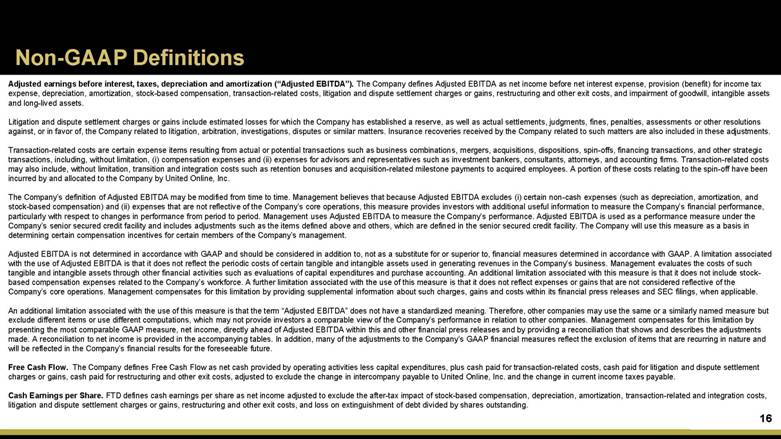
| Non-GAAP Definitions Adjusted earnings before interest, taxes, depreciation and amortization (“Adjusted EBITDA”). The Company defines Adjusted EBITDA as net income before net interest expense, provision (benefit) for income tax expense, depreciation, amortization, stock-based compensation, transaction-related costs, litigation and dispute settlement charges or gains, restructuring and other exit costs, and impairment of goodwill, intangible assets and long-lived assets. Litigation and dispute settlement charges or gains include estimated losses for which the Company has established a reserve, as well as actual settlements, judgments, fines, penalties, assessments or other resolutions against, or in favor of, the Company related to litigation, arbitration, investigations, disputes or similar matters. Insurance recoveries received by the Company related to such matters are also included in these adjustments. Transaction-related costs are certain expense items resulting from actual or potential transactions such as business combinations, mergers, acquisitions, dispositions, spin-offs, financing transactions, and other strategic transactions, including, without limitation, (i) compensation expenses and (ii) expenses for advisors and representatives such as investment bankers, consultants, attorneys, and accounting firms. Transaction-related costs may also include, without limitation, transition and integration costs such as retention bonuses and acquisition-related milestone payments to acquired employees. A portion of these costs relating to the spin-off have been incurred by and allocated to the Company by United Online, Inc. The Company’s definition of Adjusted EBITDA may be modified from time to time. Management believes that because Adjusted EBITDA excludes (i) certain non-cash expenses (such as depreciation, amortization, and stock-based compensation) and (ii) expenses that are not reflective of the Company’s core operations, this measure provides investors with additional useful information to measure the Company’s financial performance, particularly with respect to changes in performance from period to period. Management uses Adjusted EBITDA to measure the Company’s performance. Adjusted EBITDA is used as a performance measure under the Company’s senior secured credit facility and includes adjustments such as the items defined above and others, which are defined in the senior secured credit facility. The Company will use this measure as a basis in determining certain compensation incentives for certain members of the Company’s management. Adjusted EBITDA is not determined in accordance with GAAP and should be considered in addition to, not as a substitute for or superior to, financial measures determined in accordance with GAAP. A limitation associated with the use of Adjusted EBITDA is that it does not reflect the periodic costs of certain tangible and intangible assets used in generating revenues in the Company’s business. Management evaluates the costs of such tangible and intangible assets through other financial activities such as evaluations of capital expenditures and purchase accounting. An additional limitation associated with this measure is that it does not include stock-based compensation expenses related to the Company’s workforce. A further limitation associated with the use of this measure is that it does not reflect expenses or gains that are not considered reflective of the Company’s core operations. Management compensates for this limitation by providing supplemental information about such charges, gains and costs within its financial press releases and SEC filings, when applicable. An additional limitation associated with the use of this measure is that the term “Adjusted EBITDA” does not have a standardized meaning. Therefore, other companies may use the same or a similarly named measure but exclude different items or use different computations, which may not provide investors a comparable view of the Company’s performance in relation to other companies. Management compensates for this limitation by presenting the most comparable GAAP measure, net income, directly ahead of Adjusted EBITDA within this and other financial press releases and by providing a reconciliation that shows and describes the adjustments made. A reconciliation to net income is provided in the accompanying tables. In addition, many of the adjustments to the Company’s GAAP financial measures reflect the exclusion of items that are recurring in nature and will be reflected in the Company’s financial results for the foreseeable future. Free Cash Flow. The Company defines Free Cash Flow as net cash provided by operating activities less capital expenditures, plus cash paid for transaction-related costs, cash paid for litigation and dispute settlement charges or gains, cash paid for restructuring and other exit costs, adjusted to exclude the change in intercompany payable to United Online, Inc. and the change in current income taxes payable. Cash Earnings per Share. FTD defines cash earnings per share as net income adjusted to exclude the after-tax impact of stock-based compensation, depreciation, amortization, transaction-related and integration costs, litigation and dispute settlement charges or gains, restructuring and other exit costs, and loss on extinguishment of debt divided by shares outstanding. 16 |

